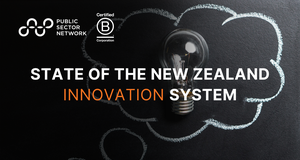The Internet of Things (IoT) refers to the billions of physical devices around the world that are now connected to the internet, all collecting and sharing data. Almost any physical object can be transformed into an IoT device, communicating information via the internet or through the Cloud.
Over the past decade, Australian cities have begun using IoT to improve infrastructure, traffic congestion, low carbon living and environmental management. Although these are fantastic use cases for IoT, smarter and more innovative applications are now being developed.
Read on to discover 5 New IoT Applications in 2021 , and how they are improving environmental and operational outcomes across a range of sectors.
1. Driving sustainable waste management
Australians use around 70 billion pieces of soft scrunchable plastic each year . Shamefully, only 13% of plastic is recovered while 84% is sent to landfill. This is mostly caused by the inability to sort soft plastic waste from co-mingled recycling in waste facilities, causing soft plastics to get tangled in machinery, cause equipment failures and contaminate other waste streams.
Thankfully, the University of Sydney’s Centre for IoT is developing a system that uses computer vision, artificial intelligence (AI), IoT and a robotic arm to ‘see and sort’ soft plastics from mixed recycling . Previously, only humans were capable of sorting soft plastics from co-mingled waste. However, by using an IoT system based on different parts of the human body, soft plastics are able to be automatically identified and separated from other waste. What’s even better is the recovered soft plastics are fed back into the circular economy to produce products such as fuel oil , indoor and outdoor furniture, and other plastic products, reducing the effect of pollution on marine life and human health.
2. Maintaining public assets
VicRoads manages over 3000 of Victoria’s bridges . Keeping these bridges functional and safe is a priority for the Victorian government, who are exploring ways to use IoT sensors to better prioritise maintenance budgets and target high-priority infrastructure fixes.
The Victorian government is using IoT to remotely monitor the structural health of high-priority bridges, using fibre optic-connected sensors to accurately measure and estimate structural strain, thermal response, bending, loads, vibration and corrosion. These remote sensors analyse data collected and perform advanced analytics to deliver information directly to the bridge owners and operators, helping to better anticipate demand, predict maintenance needs and prevent disruptions.
3. Monitoring employee wellbeing
International builders Laing O’Rourke have created a “smart hardhat” with fitted sensors that monitor employees’ health on construction sites.
The IoT-enabled hardhat comes with a sweatband sensor array that measures the heart rate and the temperature of the wearer. Additionally, it’s fitted with an accelerometer for orientation and shock, and contains a global positioning system (GPS) device to track employee location.
The data collected through IoT technology is delivering positive health and safety outcomes for construction workers, alerting supervisors if they have been in the sun too long or if an individual is about to suffer heatstroke.
4. Enabling industrial communications from space
As a subset of IoT, the Industrial Internet of Things (IIoT) refers to the billions of industrial devices that have sensors, are connected to wireless networks, and are gathering and sharing data across great expanses. To enable IIoT devices to communicate, the South Australian company Fleet Space Technologies are using commercial nanosatellites into orbit , to provide 24 hour IIoT M2M communication across Australian critical infrastructure. This includes remote mine sites, gas pipelines and rural dispersed electricity pylons with central base stations.
Nanosatellite-enabled IIoT is revolutionising the resource and mining industries, as well as supporting international projects such as NASA’s Artemis Program. By making satellites smaller and more able to function when exposed to extreme temperatures once deployed in space, these satellites support mining, manufacturing and communications across Australia’s rugged terrain.
5. Improving farming with digital agriculture solutions
It’s well documented that IoT can help to collect, process and transmit data on farms, assisting with pest identification, safety traceability, unmanned agricultural machinery and more. In fact, Agriculture Victoria has already invested in an on-farm IoT trial, testing the benefits of IoT technology for farm business and performance.
In addition to the known benefits of IoT smart farming, start-up agribusiness Smart Paddock is using IoT in proprietary Bluebell tags and collars for livestock . They’re solar powered and feature GPS, accelerometer and temperature sensors, and an innovative Microsoft cloud-based analytics platform. Biometric data is collected on the tag, and the animal’s location can be found using GPS.
The tag uses a sensor to measure temperature that provides much insight to the farmer. For example, a combination of raw data (e.g. temperature, accelerometer data and GPS) captured over time provides a good indicator of whether an animal is sick or calving. Cloud-based machine learning interprets the data for the farmer, making managing and monitoring livestock an easier task.
Are you interested in how IoT is working for local government?
Register for Public Sector Network’s Digital City Infrastructure: IoT virtual event on Tuesday 20th July. Learn about current and upcoming applications of IoT from leaders in the Smart Cities & Infrastructure space.
2

















